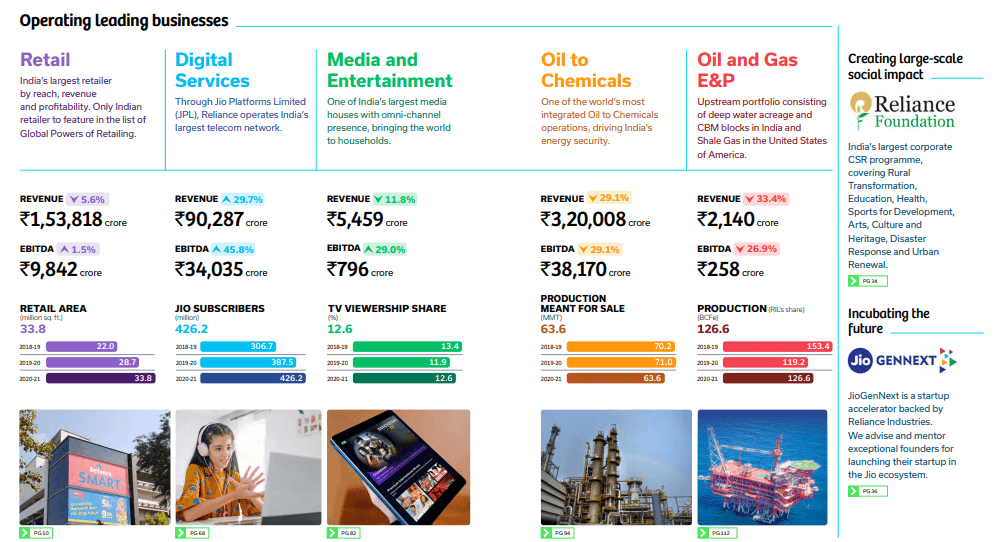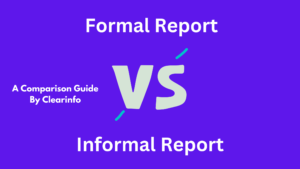



This is a detailed guide to what is a business report, explained with examples, types, importance, and features, and how to write it with elements and a checklist.
“A business report is an orderly, objective communication of factual information that serves some business purpose”. By Raymond Vincent Lesikar, and John D. Pettit
A business report is a formal document that provides an analysis of a specific business issue or situation. It typically includes detailed information on the topic at hand such as data, research, and other relevant sources.
Business reports are used to make business decisions, identify problems or opportunities, or track progress toward goals. They are often written for an internal audience, such as managers or executives, but may also be shared with external stakeholders, such as investors or clients.
Business reports should be well-structured, concise, and objective, presenting findings and recommendations in a clear and easily understandable format. They may include charts, graphs, and other visual aids to help illustrate key points.
A business report typically focuses on a specific company’s performance, operations, and financial results. It can provide information on topics such as sales trends, revenue growth, expenses, and profitability.
In contrast, a market report focuses on the broader market landscape and provides information on the trends, opportunities, and challenges in a specific industry. Market reports can include information on market size, growth potential, competition, and consumer behavior.
While both reports aim to provide useful information for decision-making, their focus and scope are different, with business reports focusing on internal operations, and market reports focusing on external market factors.
A business report is a document that provides detailed information on a specific aspect of a company’s operations, such as financial results, sales trends, customer feedback, or employee performance. It is used for decision-making, tracking progress, and communicating with stakeholders.
On the other hand, a business plan is a comprehensive document that outlines a company’s goals, strategies, and tactics for achieving success. It typically includes an analysis of the market, a description of the company’s products or services, an overview of the management team, and a financial plan that details how the company will generate revenue and manage expenses over time.
Writing a business report can be a valuable tool for analyzing and presenting information related to a company’s performance or a specific business project. Here are some steps to follow when writing a business report:
1) Determining the purpose: Before writing the report, it’s important to define the purpose of the report. The writer must know what type of report they are writing and why it is being written. This helps in better research and writing.
2) Check target audience: After determining the purpose of the report, the writer must keep in mind who the report will be addressed. This can help in effectively conveying the message to the concerned persons.
3) Gather information: The writer must then gather data and conduct research. It is necessary to use credible sources such as industry reports, financial statements, or market research studies to collect relevant data.
4) Analysis of the supportive information: This is the main body of the report where the writer will present their findings. They must make sure to use data and statistics to support conclusions. This section can include charts, graphs, and tables to make the information easy to understand.
5) Findings and recommendations: Once the writer has presented their findings, they can draw conclusions and make recommendations based on the analysis. This is where they can suggest ways to improve the company’s performance or make recommendations for future business projects.
6) Determining report format: Before writing the report, the writer must determine what kind of business report it is. This is done so they can structure the report in a logical and easy-to-follow way. They can create outlines that include headings, subheadings, and sections to organize the information in a clear and concise manner.
A business report consists of three main elements – Front Matter, Body of the Report, and Back Matter.
(A)Front Matter: The front matter of a business report is the first section of the report and provides essential information about the report’s contents and purpose. It includes the following elements:
A portion of the executive summary in the business report:
An executive summary is a brief overview of a business report that highlights the main points and conclusions of the report. It is usually the first section of the report that the reader sees and is often used as a standalone document for busy executives who need to quickly understand the report’s key findings.
The purpose of an executive summary is to provide a concise and clear picture of the main purpose of the report, the methods used to gather data, the key findings and conclusions, and the recommendations based on those conclusions.
(B) Body of the Report: The body of a business report is the main section of the report where the writer presents the data, analysis, and interpretation of the findings in a clear and concise manner. It contains the following elements:
The importance of tables and graphs in a business report:
Tables and graphs are important elements in a business report because they can help to communicate complex data and information in a visual and easy-to-understand way. They are useful for presenting large amounts of data in a clear and concise manner, making it easier for the reader to interpret and understand the information presented.
(C) Back Matter: The back matter of a business report is the section that comes after the main body of the report and includes any additional information that may be useful for the reader. This section may include
Headings are an essential tool for organizing a business report and making it easy to read and navigate. Headings should be clear and descriptive, giving the reader a sense of what each section will cover.
They should also be formatted in a way that makes them stand out from the rest of the text, such as by using bold or larger font sizes. They should be used consistently throughout the report to guide the reader through the various sections and sub-sections.
When using headings in a business report, it is important to follow a logical and hierarchical structure. The main heading of the report should clearly state the purpose of the report and provide an overview of the main points that will be covered. Subheadings should be used to break down the report into smaller sections, each covering a specific topic related to the overall theme of the report.
Below we have listed business reports of some top companies along with the business performance metrics.



In business communication, there are many different types of business reports , with each type designed to provide specific information about a particular aspect of a company’s operations. Some common types of business reports include:
1) Informational Report: This type of business report provides factual information on a particular topic or issue, without making any recommendations or drawing conclusions.
2) Analytical Report: These reports use data and analysis to draw conclusions and make recommendations. It typically includes an executive summary, introduction, methods and results sections, and a conclusion with recommendations.
3) Routine Report: These reports are produced on a regular basis, such as weekly or monthly. It typically provides updates on specific activities or tasks, such as progress on a project or sales figures for a given period.
4) Informal Business Report: An informal business report is less structured and formal than other types of business reports. It may be used for internal communication between colleagues or departments and can include memos, emails, or short notes.
5) Short Report: This type of business report is concise and to the point, typically no more than five pages in length. It is often used to communicate a specific issue or recommendation quickly and may include only the most essential information.
Business reports are an important tool for organizations to communicate and document important information related to the business. Some of the key reasons why business reports are important to include:
A good business report should have the following characteristics:
1) Purpose: Business reports are written with a specific purpose in mind, such as informing a decision, presenting research findings, or providing updates on a project or initiative.
2) Audience: Reports are tailored to the needs and interests of the intended audience, which may include executives, managers, stakeholders, or external clients.
3) Structure: The report must have a clear and standardized structure, which typically includes an introduction, background information, results, analysis, recommendations, and conclusions.
4) Objectivity: Reports are expected to be objective and unbiased, and to present information and analysis in an accurate and factual manner.
In this section, we will look at a few advantages and disadvantages of business reports .
Disadvantages:
A short business report is a concise document that provides a brief summary of key information related to a specific business topic. Short reports are typically between one and five pages in length and are often used to communicate information to a specific audience.
Short business reports typically include an introduction that highlights the context of the report, a summary of the key points or findings, and a conclusion or recommendation. They may also include supporting data, such as charts, graphs, or tables, to help illustrate key points.
Business report writing is a critical tool for achieving success in business. Reports provide valuable information to business owners and managers that can be used to make informed decisions, identify improvement areas, and create growth strategies.
They also facilitate communication within the organization, allowing employees and stakeholders to stay informed about the business’s progress and work together towards common goals. Business reports can be used to help plan for the future and set goals, and promote accountability by tracking and reporting on performance metrics.
Here is a checklist for making your business report reader-friendly:
Ans: The purpose of a business report is to communicate relevant information about a company’s performance, activities, or other important data to various stakeholders, including executives, shareholders, employees, customers, or external partners. They also help in decision-making, evaluation, and keeping a record of business activities.
Ans: The important principles of the business report are the principle of objectivity, the principle of knowing your target audience, the principle of planning & framework, the principle of clarity, the principle of organizing your report, and the principle of evaluating information.
Ans: The 5 main parts of a business report include a title page, executive summary, table of contents, findings, and discussion, and finally, the conclusion and recommendations.
Aditya is the head of content at clearinfo and is responsible for improving the site's organic visibility. He is a certified SEO trainer and has worked with SaaS companies and startups to enhance their digital marketing presence. He is also an ahref fanboy. Click to connect with him on Twitter, and LinkedIn.


August 5, 2022

August 10, 2022